-

ǂKhomani San - Hugh Brody Archive
The ǂKhomani San are the first people of the southern Kalahari. They lived as hunters and gatherers in the immense desert in the northwest corner of South Africa. For them, it was a land rich in wildlife, plants, trees, great sand dunes and dry riverbeds. When the ǂKhomani San share their history, they tell a story of dispossession from their lands, erasure of their way of life, and disappearance of their language. To speak of their past is to search in memory for all that was taken from them in the colonial, apartheid and post-apartheid era. But they also tell a story of reclamation and recovery of lands, language and even of memory itself. They tell a story of struggle to emerge from the losses of the past, to put in place a new story. The collection presented here includes: photographs, posters and maps, trailers from the 'Tracks across Sand' documentary, and interview transcripts.
-
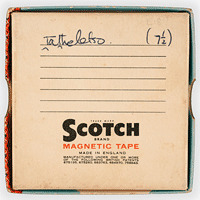
Ernst Westphal: San Languages
Westphal was Professor of African Languages at UCT between 1962 and 1984, and is best known for his contributions to the studies of non-Bantu click languages, lumped together under a misleading cover term ‘Khoisan’ by other scholars. The Westphal sound files are precious because they include recordings of some languages, which are no longer spoken and of which there is no written record. The collection presented here includes sound files and manuscripts.
-
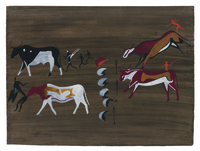
George Stow Digital Archive
The George Stow Digital Archive includes the copies of rock paintings made by polymath George Stow in the mid 19th century, as well as a selection of his field notebooks, letters and maps. George Stow was an Englishman who relocated to the turbulent Eastern Cape in the early 1840s. He became interested in many aspects of South African history and landscape, undertaking extensive geological surveys, taking up various posts, publishing poetry, and researching and writing an extensive history of the ‘Native Races’ of southern Africa. He made several hundred copies of rock paintings, trekking thousands of miles across the countryside and interviewing San wherever he could on the meanings and use of the art. Today his copies are amongst the loveliest records of paintings, revealing as much about the rock art itself as about Stow and the ideas he had about them. George Stow’s archive, housed mainly at the National Library of South Africa, Iziko South African Museum, the McGregor Museum and the University of Cape Town, includes astonishing collections of detailed maps, field notebooks, letters, drawings, manuscripts and painted copies of rock paintings and engravings. The digital archive includes selections of the maps, notes and letters, and all the extant rock art copies.
-
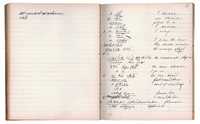
The Digital Bleek and Lloyd
This digital publication is part of a Llarec project to digitise, research and publish the Bleek and Lloyd Archive. The Digital Bleek and Lloyd includes scans of every page of the 110 Lucy Lloyd
-
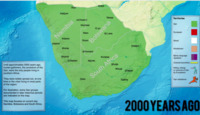
!Khwa ttu San Heritage Centre Featured Exhibitions: Enter the world of the San, southern Africa's First People
!Khwa ttu San Heritage Centre provides a platform for San to share and explore San history and culture among both San community members and local and international visitors. On their 'Featured Exhibitions' page the information on the following topics can be found: Genetics and Human Origins - !Khwa ttu has worked in co-operation with geneticists who are exploring how the San fit into accounts of the origins of all people from Africa. Eight videos are featured presenting the work of Brenna Henn, Carina Schlebusch and Himla Soodyall. The individual video topics include: (1) Why is our San history so important? (2) We are all from Africa. Do we come from southern Africa? (3) Are San descendents of the earliest people in southern Africa? (4) Are San first people? (5) Did your ancestors leave Africa 60,000 years ago? Or did they stay? (6) Who are the KhoeSan? How are the Khoe and the San different? (7) What is the relationship of Coloured people to KhoeSan people? (8) Do South Africans have KhoeSan ancestry? The Emergence of Human Creativity - Archaeologists describe four sites that provide us with information on the ancestral legacy and history of humanity in southern Africa. The archaeological sites include: Diepkloof Shelter, Pinnacle Point, Klassies River and Border Cave. Loss of San Land and Lifestyle - An animated video representating the land loss of indigenous people starting from 2000 years ago to 1965. The video was undertaken by Josh Cohen under the commission of !Khwa ttu San Heritage Centre. The San Healing Dance - The site offers a video entitled 'The last tribal dance' where people have the opportunity to witness a San healing dance by
-

Toponymica Hottentotica: B (A-Z)
This volume contains the information derived from the second of phase of the authors research project on Khoikhoi topographical names. It provides further insights into the motivations behind Khoikhoi place naming conventions.
-
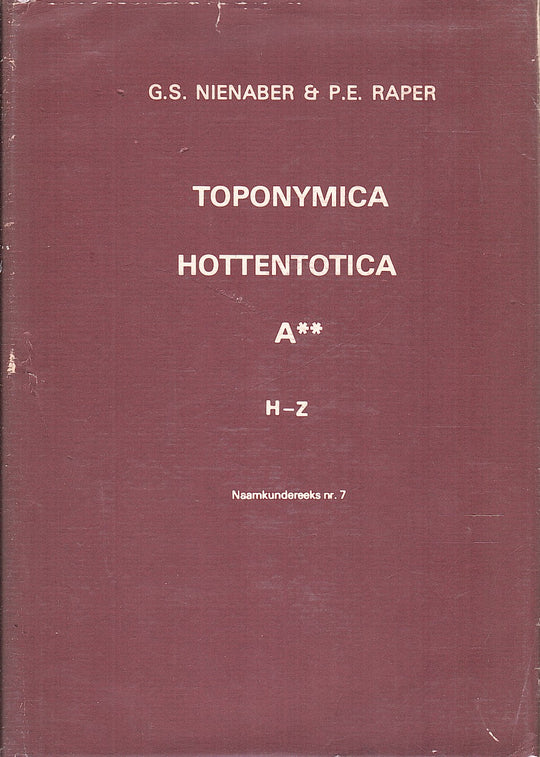
Toponymica Hottentotica: A2 (H-Z)
This volume provides readers with a list of place and farm names through the lens of the Khoi people. Included with each entry is descriptive information as documentary evidence of that the Khoi place names existed. This specific volume contains the entries from H-Z.
-

Toponymica Hottentotica: A1 (A-G)
This volume provides readers with a list of place and farm names through the lens of the Khoi people. Included with each entry is descriptive information as documentary evidence of that the Khoi place names existed. This specific volume contains the entries from A-G.
-
Improvisations of empire: Thomas Pringle in Scotland, the Cape Colony and London, 1789–1834
Improvisations of Empire offers a historical, biographical and literary study of the life and writings of Thomas Pringle (1789–1834), the son of a Lowland tenant farmer in Scotland. It examines his Scottish journalistic and literary career, his emigration to the Cape Colony as the head of a party of Scottish settlers and his subsequent relocation to London where he gained prominence as the secretary of the Anti-Slavery Society and the editor of a popular annual, Friendship’s Offering. The central concern of the book is with Pringle’s poetry and his affiliated prose, and how these writings reflect the negotiation of his deeply conflicted colonial experience from the perspectives of his Scottish background, his shifting colonial locations and his subsequent period of residence in London.
-
Bushmen in a Victorian world: The remarkable story of the Bleek-Lloyd collection of Bushmen folklore
Wilhelm Bleek was fascinated by African languages and set out to make sense of a complex and alien Bushman tongue. At first Lucy Lloyd worked as his assistant, but soon proved to be so gifted a linguist and empathetic a listener that she created a monumental record of Bushman culture. Their informants were a colorful cast. The teenager, /A!kunta, taught Bleek and Lloyd their first Bushman words and sentences. The wise old man and masterful storyteller, //Kabbo, opened their eyes to a richly imaginative world of myth and legend. The young man, Dia!kwain, explained traditional beliefs about sorcery, while his friend #Kasin spoke of Bushman medicines and poisons. The treasures of Bushman culture were most fully revealed in conversations with a middle-aged man known as /Han=kass'o, who told of dances, songs and the meaning of images on rocks. The human histories and relationships involved in this unique collaboration across cultures are explored in full for the first time in this remarkable narrative.
-
The distribution of Bushman languages in South Africa
This article/chapter can be found in "Festschrift Meinhof". A more accurate discription is not available currently.
-
The mantis and his friends: Bushman folklore
Description not available
-

The Khoisan peoples of South Africa: Bushmen and Hottentots
This book deals with those two groups of natives in South Africa who have suffered most at the hands of the European settlers: the Bushmen and the Hottentots. The first part describes the country, history and physical characteristics of the Khoisan, the generic name used for the Bushmen and the Hottentots. The main part is devoted to a description of the respective cultures of the Bushmen and the Hottentots, including their social organization, social habits and customs, economic and political life, religion and magic, and art and knowledge. The final part is an analysis of the Khoisan languages.
-

Report and proceedings with appendices of the Government Commission on Native Laws and Customs
In 1880 a commision was established to devise a governance structure for the management of the Aboriginal population found in the British colony of South Africa. The purpose of this report presented in 1883 was to suggest a code of civil and criminal law suited to the conditions found within the colony. The report contains the details and evidence required to establish such a structure. The commision's scope was the governance of the Aboriginal people in general in practice they focussed their attention on the tribes inhabiting the Eastern and Frontier Districts of the colony and the geographic area between the Great Kei River and the boundary of Natal. The people represented included divisions of the Xhosa and Themba tribes and the clans of Bomvana, Pondomise, Boca, Xesibe and a newly designated people called Fingoes.
-

Tsuni-//Goam: The Supreme Being of the Khoi-Khoi
An ethnography of the Khoikhoi people, their language and religous beliefs. At the time, the author through this and his other work contributed to the "westerners" understanding of the Khoi and San people.
-

A glimpse into the mythology of the Maluti Bushmen: [with chromo-lithogragh illustrations]
In 1873, J.M. Orpen obtained the services of a San guide named Qing. As they travelled through the Maluti mountains, Orpen copied rock paintings and Qing explained what they meant. This article Orpen's recounting of this experience.
-

A comparative grammar of South African languages: volume 2: The concord
The present volume only elucidates one part of that grand system of Concord which is the fundamental principle of the Pronominal languages.
-

A comparative grammar of South African languages: volume 1: The phonology
It is the object of this work to give a comparative view of the structure of the languages spoken in Africa to the South of the Equator, as far as we are yet acquainted with them . These languages arc, according to their structure and origin, divided into three classes. As representatives of these three classes we may name the languages of the Kafir, the Hottentot, and the Bushman.
-

The library of His Excellency Sir George Grey, K.C.B: Philology: Vol. 1 Part 1:South Africa (within the limits of British influence)
This volume contains a discussion and discriptive matter on the sixteen dialects of South African language as could be found in the land forming part of the British colonial empire. The specific emphasis of the work is on the Suffix-Pronominal Languages of the Hottentot people. The source material informing this volume are the publications and manuscripts that could be found in the library of Sir George Grey, K.C.B.
-

A grammar and vocabulary of the Namaqua-Hottentot language
-

The Kafir language: comprising a sketch of its history, which includes a general classification of South African dialects, ethnographical and geographical, remarks upon its nature and a grammar
The following work was undertaken, partly to afford assistance in the acquisition of the Kafir language, and partly to encourage and stimulate inquiry in reference to South African dialects in general.
-

Narrative of an exploratory tour to the north-east of the colony of the Cape of Good Hope
This translated work is from the perspective of French missionaries. It is a narrative of the two authors, Reverend Arbousset and Reverend Daumas, exploratory tour of the north east of the Cape of Good Hope. The aim of the documented missionary tour was to seek out unknown tribes, to open communication channel with the chiefs of these tribes and to formulate missionary plans in order to extend the influence of Christianity and the missionaries civilisation.
-

Memoir respecting the Kaffers, Hottentots, and Bosjemans, of South Africa: Volume 1
Volume 1 describes the general condition of the Aborigines on the first arrival of the Europeans among them with some comparison of their condition with the condition of other Aborigine people in our parts of the world. It also describes events related to the Kaffer people.
-

Memoir respecting the Kaffers, Hottentots, and Bosjemans, of South Africa: Volume 2
Volume 2 describes events related to the Hottentots and Bosjemans.
-

A grammar of the Kaffir Language: 2nd ed. augm. and improved
When the Rev. William J. Davis was about to visit England in the year 1839, he was requested to super intend the printing and publication of a new edition of the Rev. William Boyce's Kaffir Grammar. That office of friendship he performed in a manner highly creditable to himself, and introduced, in various portions of the work, some important improvements; which would have been still more ample, had not his brief sojourn in this country prevented the completion of his wishes. After his return to Africa, he transmitted for insertion the “Analytical Compendium of Kaffir Grammar,” in three Synoptical Tables, with explanatory notes, which are now prefixed to the Grammar, and which will convey to the reader a clear view of the peculiar genius and curious construction of this ancient and very refined language.
-

ǂKhomani San - Hugh Brody Archive
-

Ernst Westphal: San Languages
-

George Stow Digital Archive
-

The Digital Bleek and Lloyd
-

!Khwa ttu San Heritage Centre Featured Exhibitions: Enter the world of the San, southern Africa's First People
-

Toponymica Hottentotica: B (A-Z)
-

Toponymica Hottentotica: A2 (H-Z)
-

Toponymica Hottentotica: A1 (A-G)
-
Improvisations of empire: Thomas Pringle in Scotland, the Cape Colony and London, 1789–1834
-
Bushmen in a Victorian world: The remarkable story of the Bleek-Lloyd collection of Bushmen folklore
-
The distribution of Bushman languages in South Africa
-
The mantis and his friends: Bushman folklore
-

The Khoisan peoples of South Africa: Bushmen and Hottentots
-

Report and proceedings with appendices of the Government Commission on Native Laws and Customs
-

Tsuni-//Goam: The Supreme Being of the Khoi-Khoi
-

A glimpse into the mythology of the Maluti Bushmen: [with chromo-lithogragh illustrations]
-

A comparative grammar of South African languages: volume 2: The concord
-

A comparative grammar of South African languages: volume 1: The phonology
-

The library of His Excellency Sir George Grey, K.C.B: Philology: Vol. 1 Part 1:South Africa (within the limits of British influence)
-

A grammar and vocabulary of the Namaqua-Hottentot language
-

The Kafir language: comprising a sketch of its history, which includes a general classification of South African dialects, ethnographical and geographical, remarks upon its nature and a grammar
-

Narrative of an exploratory tour to the north-east of the colony of the Cape of Good Hope
-

Memoir respecting the Kaffers, Hottentots, and Bosjemans, of South Africa: Volume 1
-

Memoir respecting the Kaffers, Hottentots, and Bosjemans, of South Africa: Volume 2
-

A grammar of the Kaffir Language: 2nd ed. augm. and improved



